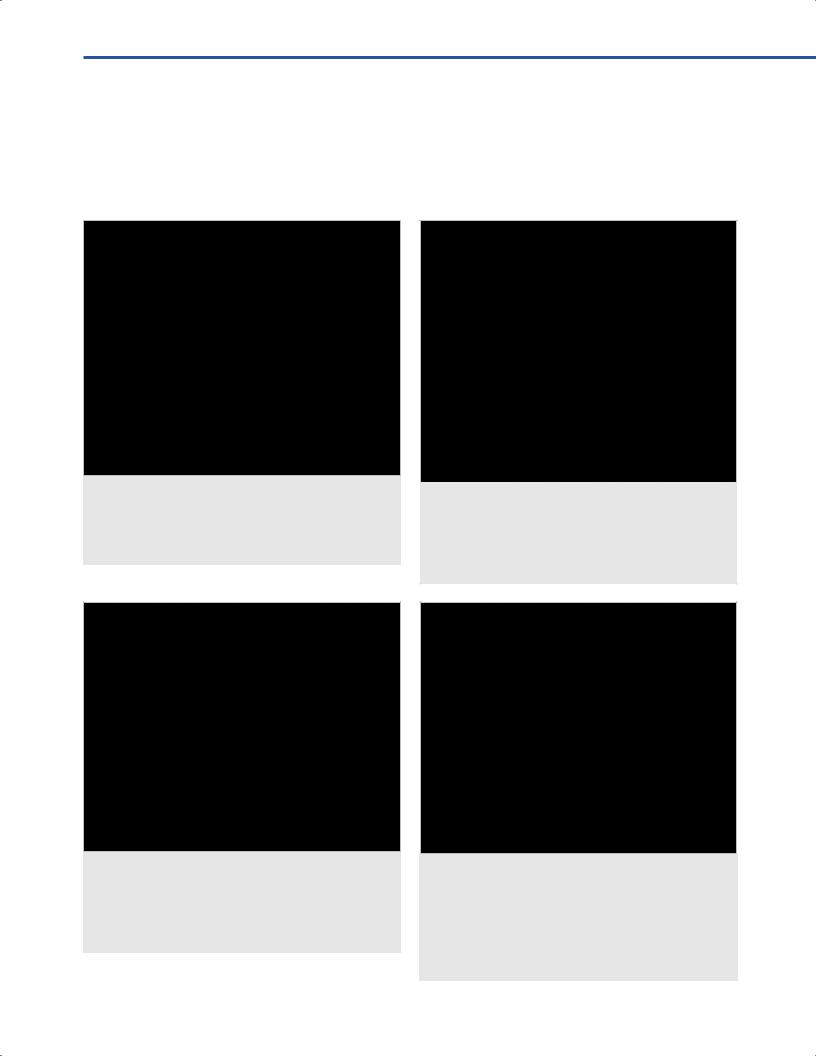
- •Operative Cranial Neurosurgical Anatomy
- •Contents
- •Foreword
- •Preface
- •Contributors
- •1 Training Models in Neurosurgery
- •2 Assessment of Surgical Exposure
- •3 Anatomical Landmarks and Cranial Anthropometry
- •4 Presurgical Planning By Images
- •5 Patient Positioning
- •6 Fundamentals of Cranial Neurosurgery
- •7 Skin Incisions, Head and Neck Soft-Tissue Dissection
- •8 Techniques of Temporal Muscle Dissection
- •9 Intraoperative Imaging
- •10 Precaruncular Approach to the Medial Orbit and Central Skull Base
- •11 Supraorbital Approach
- •12 Trans-Ciliar Approach
- •13 Lateral Orbitotomy
- •14 Frontal and Bifrontal Approach
- •15 Frontotemporal and Pterional Approach
- •16 Mini-Pterional Approach
- •17 Combined Orbito-Zygomatic Approaches
- •18 Midline Interhemispheric Approach
- •19 Temporal Approach and Variants
- •20 Intradural Subtemporal Approach
- •21 Extradural Subtemporal Transzygomatic Approach
- •22 Occipital Approach
- •23 Supracerebellar Infratentorial Approach
- •24 Endoscopic Approach to Pineal Region
- •25 Midline Suboccipital Approach
- •26 Retrosigmoid Approach
- •27 Endoscopic Retrosigmoid Approach
- •29 Trans-Frontal-Sinus Subcranial Approach
- •30 Transbasal and Extended Subfrontal Bilateral Approach
- •32 Surgical Anatomy of the Petrous Bone
- •33 Anterior Petrosectomy
- •34 Presigmoid Retrolabyrinthine Approach
- •36 Nasal Surgical Anatomy
- •37 Microscopic Endonasal and Sublabial Approach
- •38 Endoscopic Endonasal Transphenoidal Approach
- •39 Expanded Endoscopic Endonasal Approach
- •41 Endoscopic Endonasal Odontoidectomy
- •42 Endoscopic Transoral Approach
- •43 Transmaxillary Approaches
- •44 Transmaxillary Transpterygoid Approach
- •45 Endoscopic Endonasal Transclival Approach with Transcondylar Extension
- •46 Endoscopic Endonasal Transmaxillary Approach to the Vidian Canal and Meckel’s Cave
- •48 High Flow Bypass (Common Carotid Artery – Middle Cerebral Artery)
- •50 Anthropometry for Ventricular Puncture
- •51 Ventricular-Peritoneal Shunt
- •52 Endoscopic Septostomy
- •Index

10 Precaruncular Approach to the Medial Orbit and Central Skull Base
Jeremy N. Ciporen and Brandon P. Lucke-Wold
10.1 Introduction
In order to decrease scarring and improve healing times, the medial precaruncular approach was developed to address pathology of the anterior cranial fossa and orbit.
The approach follows the preseptal plane to the medial orbit, which provides minimal vascular disruption. The initial ffteen cases showed no complications with quick recovery times.
When the precaruncular port of entry is combined with a neuroendoscopic transorbital approach, it can be used to access the entire cranial fossa. The technique is especially useful for addressing intraorbital pathology of the anterior skull base.
To enhance working space for instrumentation, the precaruncular approach can be combined with the transnasal approach. This dual port approach allows the surgeon to adequately treat and manage complex pathology in the central portion of the anterior cranial fossa. The fourhanded technique increases visualization, which is important for treating pathology afecting the pituitary gland, cavernous carotid arteries, and optic chiasm.
The approach allows appreciation of important anatomical landmarks including the clivus, planum sphenoidale, tuberculum sella, and suprasellar region. In addition to treating pathology of the anterior cranial fossa, the precaruncular approach has been used for minimal dissection repairs of blowout fractures to the medial orbit. The approach provides adequate reduction of soft tissue to allow for the correct placement of implants.
This chapter focuses on the important considerations regarding patient positioning, location of incision, endoscopic portal site, and variations on the technique. Additionally, the primary indications are highlighted with supported evidence from both case series and cadaveric models.
10.2 Indications
•Intra-orbital pathology.
•Pathology afecting the clival, sella, suprasellar, parasellar, cavernous sinus and brainstem regions.
•Decompression of the orbit/optic nerve.
•Fracture repair of the medial orbital wall.
•Cerebrospinal fuid leak repair.
10.3 Patient Positioning
•Position: The patient is positioned supine, the head can either be secured to a Mayfeld head holder or placed on a foam or gel donut.
•Body: The body is placed in neutral position.
•Head: The head is kept neutral, avoiding extension or fexion, it may be slightly turned toward the surgeon 10-15°. A sense of midline should be maintained at all times.
•Endotracheal tube: The tube is placed on the midline and directed inferiorly over the chin.
•Eye protection: Bilateral corneal shields with lubricant
are used. Betadine is preferred for the preparation, avoiding alcohol.
10.4 Skin Incision (Figs. 10.1–10.3)
•Precaruncular
○Self-retaining superior and inferior eyelid retractor is placed.
○The caruncle is identifed and lateralized with a pick up.
○The superior and inferior lacrimal ducts are identifed.
○Incision is made medial to the caruncle with a Colorado tip bovie along the avascular plane.
Fig. 10.1 Precaruncular (transorbital) approach to the clival, sellar, suprasellar, and parasellar regions. Anatomy. Abbreviations: C = caruncle; LP = lacrimal punctum.
67

III Cranial Approaches
Fig. 10.2 Precaruncular (transorbital) approach. Caruncular lateralization.
Abbreviations: C = caruncle; LP = lacrimal punctum.
Fig. 10.3 Precaruncular (transorbital) approach. Dissection. Abbreviations: C = caruncle; LP = lacrimal punctum.
10.5 Soft Tissue Dissection (Figs. 10.4–10.6)
•Scissors are used to dissect the avascular plane.
•Avoid the lacrimal sac by remaining posterior to the lacrimal impression.
•The trajectory of dissection is medial toward the medial orbital wall (lamina papyracea).
Fig. 10.4 Appreciation of intraoperative anatomy. Anterior ethmoidal artery and lamina papyracea.
Abbreviations: AEA = anterior ethmoidal artery; FES = fronto-ethmoidal suture; IN = instrument; LP = lamina papyracea; PO = periorbit.
Fig. 10.5 Appreciation of intraoperative anatomy. Posterior ethmoidal artery and fronto-ethmoidal suture. Abbreviations: FES = fronto-ethmoidal suture; LP = lamina papyricea; PEA = posterior ethmoidal artery; PO = periorbit; R = retractor.
•The periosteum is incised to optimize the dissection plane.
•The periorbit has to be maintained throughout the dissection.
•Bone Exposure
○The fronto-ethmoidal suture is identifed.
○The dissection is continued posteriorly along the suture.
68

10 Precaruncular Approach to the Medial Orbit and Central Skull Base
Fig. 10.6 Appreciation of intraoperative anatomy. Entrance to optic canal.
Abbreviations: dPEA = divided posterior ethmoidal artery; FES = fronto-ethmoidal suture; IN = instrument; LP = lamina papyracea; OC = optic canal; PO = periorbit.
Fig. 10.7 Transorbital approach to the sphenoid sinus is obtained by removing the medial orbital wall, by performing an ethmoidectomy, and middle turbinectomy. Anatomical view: orbital anatomy.
Abbreviations: OC = optic canal; oLP = opened lamina papyracea; SOF = superior orbit sure.
○The anterior ethmoidal artery is identifed, coagulated and divided as well as the posterior ethmoidal artery if more posterior exposure is needed.
○Further dissection posteriorly along the plane of the frontoethmoidal suture will lead to the optic canal and nerve.
10.6 Removal of Bone (Figs. 10.7, 10.8)
•Removal of bone inferior to the fronto-ethmoidal suture leads to the middle turbinate anteriorly and the ethmoidal air cells more posteriorly.
•Removal of the face of the sphenoid via an endonasal approach afords access through the transorbital precaruncular approach to the sphenoid sinus for visualization and instrumentation access to the clival region and posterior circulation, brainstem, sella, tuberculum, optic-carotid recesses, bilateral cavernous sinuses and the cavernous carotid arteries.
•Removal of bone superior to the fronto-ethmoidal suture leads to sub-frontal region intra-cranially.
Fig. 10.8 Transorbital approach to the sphenoid sinus is obtained by removing the medial orbital wall, by performing an ethmoidectomy, and middle turbinectomy. Anatomical view: nasal anatomy.
Abbreviations: MT = middle turbinate; S = sphenoid; SO = sphenoid ostia.
69

III Cranial Approaches
10.7 Dual Port: Endoscopic Transorbital and Transnasal Access (Figs. 10.9, 10.10)
•Combined endoscopic precaruncular transorbital and endonasal transphenoidal approach to the clival, sella, suprasellar, parasellar, cavernous sinus and brainstem regions.
Fig. 10.9 Right transorbital view through the defect in the medial orbital wall. An ethmoidectomy, middle turbinectomy has been performed, in addition to the removal of the face of the sphenoid and the bone over the sella and tuberculum. Abbreviations: C = clivus; EAC = ethmoidal air cells; LICA = left internal carotid artery; P = pituitary.
Fig. 10.10 Right transorbital view (0-degree endoscope) of the clival, sellar, suprasellar and parasellar regions. The tuberculum has been removed and the dura opened.
Abbreviations: C = clivus; LFL = left frontal lobe; LICA = left internal carotid artery; LON = left optic nerve; LSHA = left superior hypophiseal artery; OC = optic chiasm; P = pituitary; RICA = right internal carotid artery.
10.8 Critical Anatomy (Figs. 10.11–10.13)
•Optic nerve/Chiasm
•Pituitary gland/Infundibulum
•Cavernous sinuses and carotid arteries
•Anterior communicating and cerebral arteries
•Brainstem
Fig. 10.11 Right transorbital view (0-degree endoscope) of the clival, sellar, suprasellar and parasellar regions. The tuberculum and the clivus have been removed and the dura opened.
Abbreviations: BA = basilar artery; LFL = left frontal lobe; LICA = left internal carotid artery; LON = left optic nerve; OC = optic chiasm; P = pituitary; RFL = right frontal lobe; RICA = right internal carotid artery; RON = right optic nerve.
Fig. 10.12 Right transorbital view (0-degree endoscope) of the sella, suprasellar and parasellar regions. The tuberculum has been removed and the dura opened. An endonasal transsphenoidal port is used for the instrument. Dual Port access. Abbreviations: ACoA = anterior communicating artery; LACA = left anterior cerebral artery; LICA = left internal carotid artery; LON = left optic nerve; OC = optic chiasm; P = pituitary; RACA = right anterior cerebral artery; RICA = right internal carotid artery; RON = right optic nerve.
70

10 Precaruncular Approach to the Medial Orbit and Central Skull Base
Fig. 10.13 Right transorbital view (0-degree endoscope) of brainstem and posterior circulation. The clival dura has been opened. An endonasal trans-sphenoidal port is used for the instrument. Dual Port access.
Abbreviations: BA = basilar artery; BS = brainstem; III = third cranial nerve; LAICA = left anterior inferior cerebellar artery; LICA = left internal carotid artery; LPCA = left posterior cerebral artery; LSCA = left superior cerebellar artery; P = pituitary; RAICA = right anterior inferior cerebellar artery; RPCA = right posterior cerebral artery; RSCA = right superior cerebellar artery.
References
1.Ciporen JN, Moe KS, Ramanathan D, et al. Multiportal endoscopic approaches to the central skull base: a cadaveric study. World Neurosurg 2010;73(6):705–712
2.Moe KS, Kim LJ, Bergeron CM. Transorbital endoscopic repair of cerebrospinal fuid leaks. Laryngoscope 2011;
121(1):13–30
3.Moe KS. The precaruncular approach to the medial orbit. Arch Facial Plast Surg 2003;5(6):483–487
4.You HJ, Kim DW, Dhong ES, Yoon ES. Precaruncular approach for the reconstruction of medial orbital wall fractures. Ann Plast Surg 2014;72(6):652–656
71
